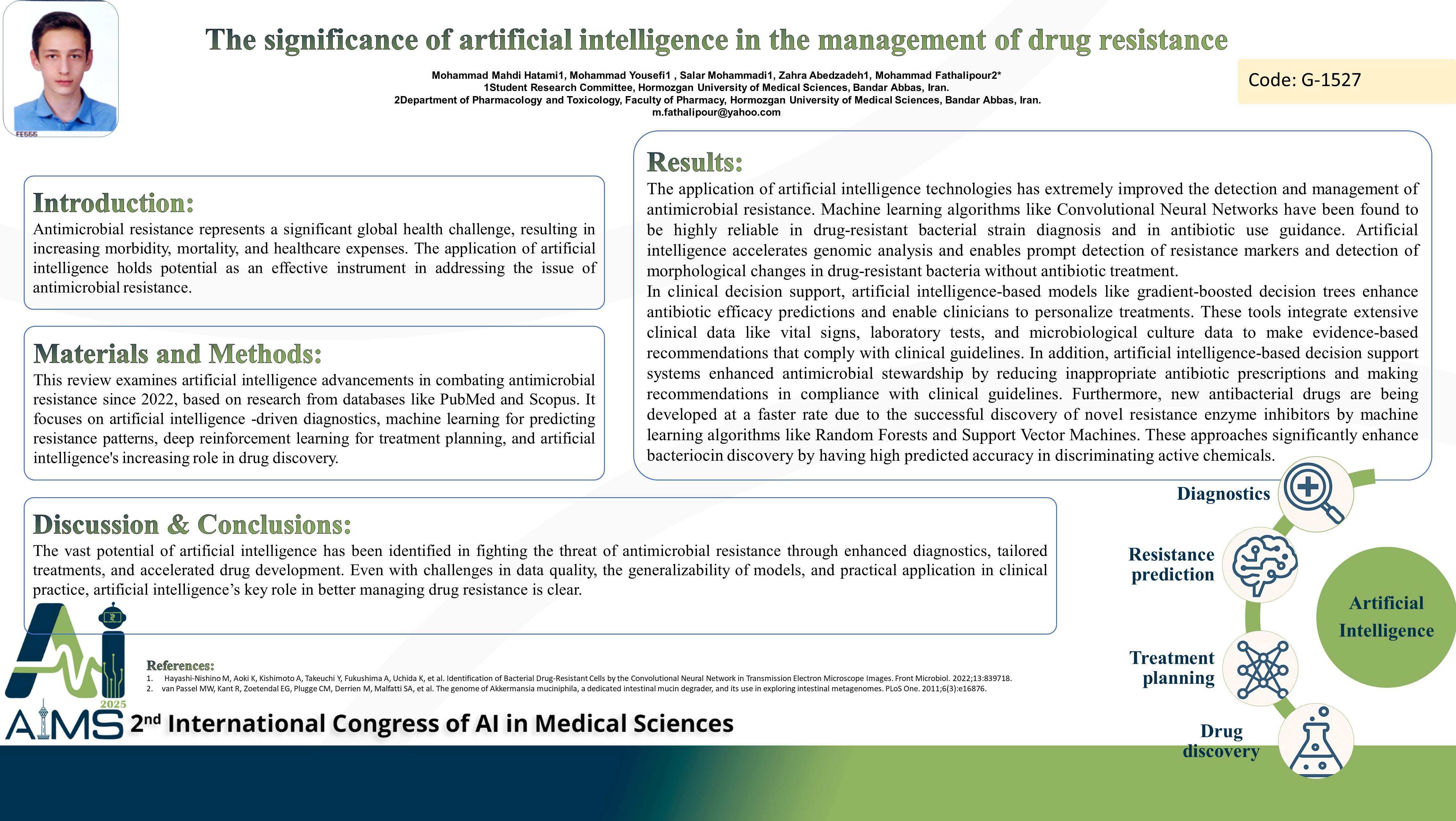The significance of artificial intelligence in the management of drug resistance
Code: G-1527
Authors: Mohammad Mahdi Hatami ℗, Mohammad Yousefi, Salar Mohammadi, Zahra Abedzadeh, Mohammad Fathalipour *
Schedule: Not Scheduled!
Tag: Drug Discovery
Download: Download Poster
Abstract:
Abstract
Background: Antimicrobial resistance represents a significant global health challenge, resulting in increasing morbidity, mortality, and healthcare expenses. The application of artificial intelligence holds potential as an effective instrument in addressing the issue of antimicrobial resistance. Method: This review examines artificial intelligence advancements in combating antimicrobial resistance since 2022, based on research from databases like PubMed and Scopus. It focuses on artificial intelligence -driven diagnostics, machine learning for predicting resistance patterns, deep reinforcement learning for treatment planning, and artificial intelligence's increasing role in drug discovery. Results: The application of artificial intelligence technologies has extremely improved the detection and management of antimicrobial resistance. Machine learning algorithms like Convolutional Neural Networks have been found to be highly reliable in drug-resistant bacterial strain diagnosis and in antibiotic use guidance. Artificial intelligence accelerates genomic analysis and enables prompt detection of resistance markers and detection of morphological changes in drug-resistant bacteria without antibiotic treatment. In clinical decision support, artificial intelligence-based models like gradient-boosted decision trees enhance antibiotic efficacy predictions and enable clinicians to personalize treatments. These tools integrate extensive clinical data like vital signs, laboratory tests, and microbiological culture data to make evidence-based recommendations that comply with clinical guidelines. In addition, artificial intelligence-based decision support systems enhanced antimicrobial stewardship by reducing inappropriate antibiotic prescriptions and making recommendations in compliance with clinical guidelines. Furthermore, new antibacterial drugs are being developed at a faster rate due to the successful discovery of novel resistance enzyme inhibitors by machine learning algorithms like Random Forests and Support Vector Machines. These approaches significantly enhance bacteriocin discovery by having high predicted accuracy in discriminating active chemicals. Conclusion: The vast potential of artificial intelligence has been identified in fighting the threat of antimicrobial resistance through enhanced diagnostics, tailored treatments, and accelerated drug development. Even with challenges in data quality, the generalizability of models, and practical application in clinical practice, artificial intelligence’s key role in better managing drug resistance is clear.
Keywords
Artificial Intelligence, Machine Learning, Antimicrobial Resistance
